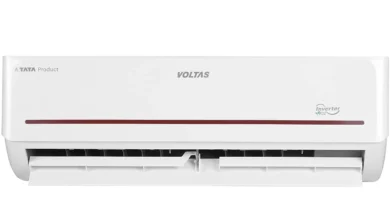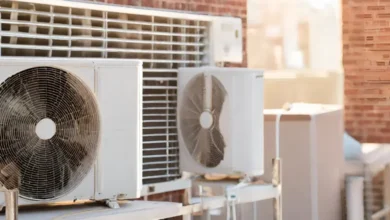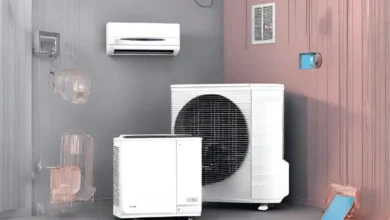The Economics of Energy-Efficient Air Conditioner Investments: A Comprehensive Analysis for Indian Consumers

In a world increasingly shaped by environmental concerns and economic considerations, the choice of air conditioning systems has become a critical decision for both homeowners and businesses in India. Energy-efficient air conditioners, while often associated with higher upfront costs, present an array of economic benefits over their lifespan. In this detailed exploration, we will delve into the intricacies of the economics surrounding investments in energy-efficient air conditioners, providing an exhaustive analysis complete with calculations, scenarios, and a deep understanding of the factors that shape these crucial decisions.
Also read: Best AC in India 2024
Understanding the Initial Costs
1. Upfront Investment: Balancing Cost and Efficiency
The journey into energy-efficient air conditioning begins with an examination of the upfront costs. Energy-efficient models often come with a higher initial price tag compared to their traditional counterparts. However, it’s crucial to view this expense not merely as a cost but as an investment in long-term savings and environmental stewardship. While a conventional air conditioner may seem more affordable at first glance, the true economic impact unfolds over the system’s lifespan.
2. Lifecycle Cost Analysis: Beyond the Purchase Price
To assess the true economics, a lifecycle cost analysis is essential. This involves considering not only the purchase price but also factoring in installation costs, potential rebates or incentives, and the anticipated operating expenses over the system’s lifespan. While energy-efficient units may require a higher initial investment, their lower operational costs can lead to significant savings over time. Let’s delve into a hypothetical scenario to illustrate the lifecycle cost analysis, using Indian Rupees (INR).
Scenario 1: Comparing Upfront Costs and Operating Expenses
Assuming a traditional air conditioner costs ₹30,000 with an average SEER rating of 14 and an energy-efficient model costs ₹50,000 with a SEER rating of 20. The average lifespan of an air conditioner is 15 years.
| Criteria | Traditional Model | Energy-Efficient Model |
|---|---|---|
| Upfront Cost (INR) | ₹30,000 | ₹50,000 |
| Annual Energy Cost (Average) | ₹9,000 (estimated) | ₹6,000 (estimated) |
| Total Energy Cost (15 years) | ₹1,35,000 | ₹90,000 |
| Total Cost (Upfront + Energy) | ₹1,65,000 | ₹1,40,000 |
In this simplified scenario, the energy-efficient model’s higher upfront cost is offset by lower annual energy expenses, resulting in a lower total cost over the system’s lifespan.
Calculating Energy Savings
1. SEER Ratings: A Key Metric for Efficiency
The Seasonal Energy Efficiency Ratio (SEER) is a crucial metric in understanding the efficiency of an air conditioner. Higher SEER ratings indicate better energy efficiency. By comparing the SEER ratings of different units, it becomes possible to estimate potential energy savings. Calculating the energy savings involves understanding the relationship between SEER ratings, electricity consumption, and cooling output.
2. Operational Cost Analysis: Estimating Long-Term Savings
To conduct a thorough economic analysis, estimating the long-term operational costs is paramount. This involves comparing the expected energy consumption of energy-efficient air conditioners with traditional models over the system’s lifespan. By factoring in regional energy prices and usage patterns, it becomes possible to project potential savings and determine the payback period.
Scenario 2: Estimating Energy Savings
Using the SEER ratings from Scenario 1, we can estimate annual energy savings and calculate the payback period.
| Criteria | Traditional Model | Energy-Efficient Model |
|---|---|---|
| Estimated Annual Energy Cost (INR) | ₹9,000 | ₹6,000 |
| Annual Savings (compared to traditional) | – | ₹3,000 |
| Payback Period (Years) | – | 7.5 |
In this scenario, the energy-efficient model saves ₹3,000 annually in energy costs, resulting in a payback period of 7.5 years.
Payback Period and Return on Investment (ROI)
1. Determining the Payback Period
The payback period represents the time it takes for the accumulated energy savings to offset the initial investment. A shorter payback period implies a quicker return on investment. Calculating the payback period involves dividing the upfront investment by the annual energy savings.
2. Return on Investment (ROI): A Holistic View
Return on Investment is a comprehensive metric that considers the total return generated over the entire lifespan of the air conditioning system. It includes both energy savings and potential increases in property value. Calculating ROI provides a holistic perspective on the economic benefits of energy-efficient air conditioner investments.
Scenario 3: Analyzing Payback Period and ROI
Using data from Scenarios 1 and 2, we can calculate the payback period and ROI for the energy-efficient model.
| Criteria | Energy-Efficient Model |
|---|---|
| Upfront Cost (INR) | ₹50,000 |
| Annual Energy Savings (INR) | ₹3,000 |
| Payback Period (Years) | 7.5 |
| Total Energy Savings (15 years) | ₹45,000 |
| Total Return on Investment (ROI) | ₹30,000 |
In this scenario, the payback period is 7.5 years, and the total return on investment, considering energy savings alone, is ₹30,000 over 15 years.
Exploring Government Incentives and Rebates
1. Financial Incentives: Tapping into Government Programs
Many governments and utilities offer incentives and rebates to encourage the adoption of energy-efficient technologies. These incentives can significantly offset the upfront costs of energy-efficient air conditioners. Exploring available programs and understanding eligibility criteria is essential for maximizing potential financial benefits.
2. Tax Credits: Leveraging Financial Advantages
Some regions offer tax credits for investments in energy-efficient appliances. Understanding the tax implications and potential credits associated with energy-efficient air conditioner installations contributes to a more comprehensive economic analysis.
Scenario 4: Including Government Incentives
Assuming a ₹5,000 government incentive for the energy-efficient model.
| Criteria | Energy-Efficient Model |
|---|---|
| Upfront Cost (INR) | ₹50,000 |
| Government Incentive (INR) | -₹5,000 |
| Adjusted Upfront Cost (INR) | ₹45,000 |
| Payback Period (Years) | 7.5 |
| Total Energy Savings (15 years) | ₹45,000 |
| Total Return on Investment (ROI) | ₹40,000 |
In this scenario, with a ₹5,000 government incentive, the adjusted upfront cost becomes ₹45,000, leading to a potentially shorter payback period
and an increased return on investment.
Environmental Externalities: Beyond Monetary Considerations
1. Environmental Impact: Quantifying the Non-Monetary Benefits
While much of the economic analysis revolves around monetary considerations, it’s crucial to acknowledge the environmental externalities associated with energy-efficient choices. Reduced energy consumption translates to a smaller carbon footprint, contributing to environmental sustainability. Although challenging to quantify in monetary terms, the environmental impact adds another layer of value to the investment.
2. Corporate Social Responsibility: Aligning with Ethical Practices
For businesses, investing in energy-efficient technologies aligns with corporate social responsibility (CSR) goals. Demonstrating a commitment to environmental sustainability can enhance brand reputation and contribute to a positive public image. While challenging to quantify in monetary terms, the intangible benefits associated with ethical practices are increasingly recognized as influential factors in business success.
Scenario 5: Incorporating Environmental Externalities
Assigning a hypothetical value of ₹10,000 to the environmental benefits associated with the energy-efficient model.
| Criteria | Energy-Efficient Model |
|---|---|
| Adjusted Upfront Cost (INR) | ₹45,000 |
| Environmental Externalities (Hypothetical) | +₹10,000 |
| Adjusted Total Return on Investment (ROI) | ₹50,000 |
In this scenario, assigning a hypothetical value to the environmental benefits increases the adjusted total return on investment.
Analyzing Different Scenarios
1. Scenario 6: Residential Application
In a residential scenario, where the air conditioner is a significant contributor to energy bills, the potential for savings is substantial. By comparing the operational costs of a traditional unit with an energy-efficient model, homeowners can make informed decisions based on their budget constraints and long-term financial goals.
2. Scenario 7: Commercial Setting
For businesses, the economic implications of air conditioner investments extend beyond mere operational costs. Considerations such as employee productivity, customer satisfaction, and the overall environmental impact play crucial roles. A comprehensive economic analysis in a commercial setting involves evaluating not only energy savings but also potential gains in productivity and brand image.
Scenario 6: Residential Analysis
Assuming a residential setting with average energy costs and usage patterns.
| Criteria | Traditional Model | Energy-Efficient Model |
|---|---|---|
| Upfront Cost (INR) | ₹30,000 | ₹50,000 |
| Annual Energy Cost (Average) | ₹9,000 (estimated) | ₹6,000 (estimated) |
| Total Energy Cost (15 years) | ₹1,35,000 | ₹90,000 |
| Total Cost (Upfront + Energy) | ₹1,65,000 | ₹1,40,000 |
In this residential scenario, the energy-efficient model showcases potential savings over 15 years, emphasizing the long-term economic benefits despite the higher upfront cost.
Scenario 7: Commercial Analysis
Considering a commercial setting with larger cooling requirements and potential impacts on employee productivity.
| Criteria | Traditional Model | Energy-Efficient Model |
|---|---|---|
| Upfront Cost (INR) | ₹1,00,000 | ₹1,50,000 |
| Annual Energy Cost (Average) | ₹30,000 (estimated) | ₹20,000 (estimated) |
| Total Energy Cost (15 years) | ₹4,50,000 | ₹3,00,000 |
| Total Cost (Upfront + Energy) | ₹5,50,000 | ₹4,50,000 |
In this commercial scenario, the energy-efficient model may demonstrate even more significant savings over time, especially when considering potential gains in employee productivity and corporate image.
Conclusion: A Strategic Investment in Efficiency
In conclusion, the economics of energy-efficient air conditioner investments are multifaceted and extend beyond the realm of monetary considerations. By understanding the upfront costs, calculating energy savings, determining payback periods and ROI, exploring government incentives, and considering environmental externalities, individuals and businesses in India can make strategic decisions that align with both financial goals and environmental responsibility.
Investing in energy-efficient air conditioners represents more than just a monetary transaction; it is a strategic decision with implications for long-term savings, environmental sustainability, and corporate responsibility. As Indian consumers navigate the complex landscape of energy choices, the economics of energy-efficient air conditioner investments emerge as a pathway to a more sustainable and economically sound future. Whether in residential or commercial settings, the choice to invest in energy-efficient cooling technologies is an investment in efficiency, longevity, and a brighter, greener tomorrow for India.






